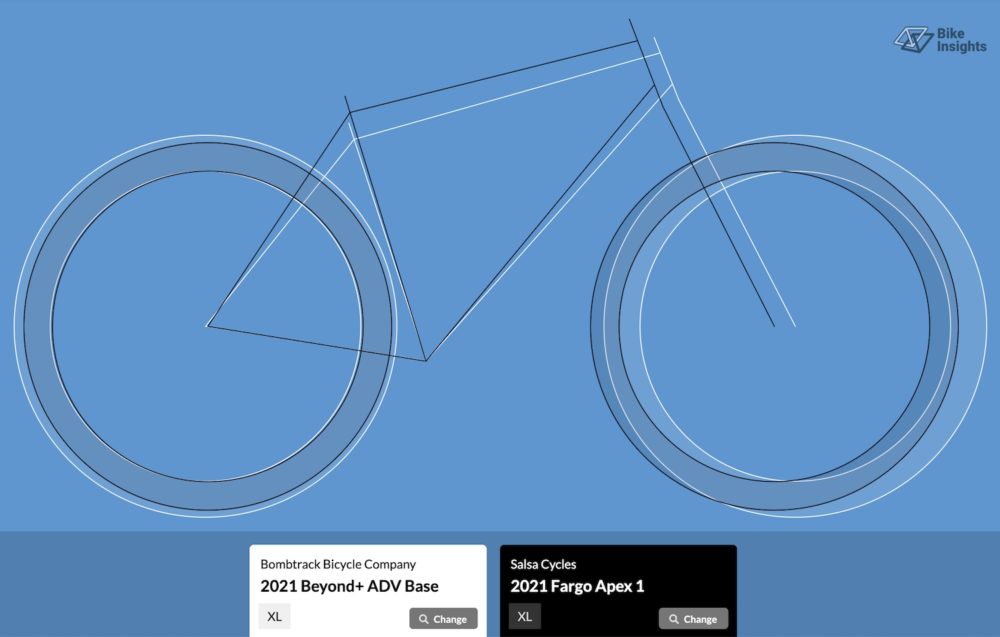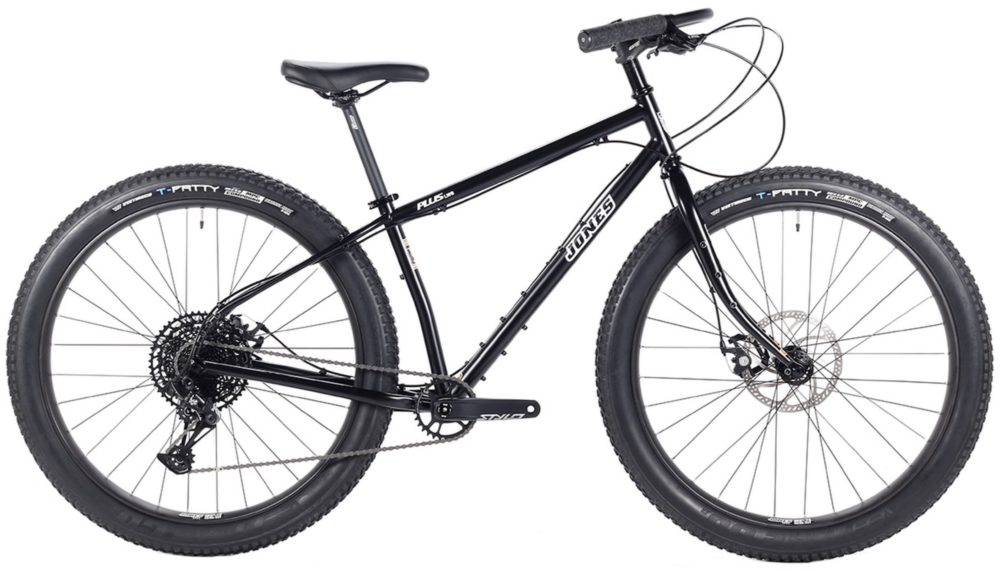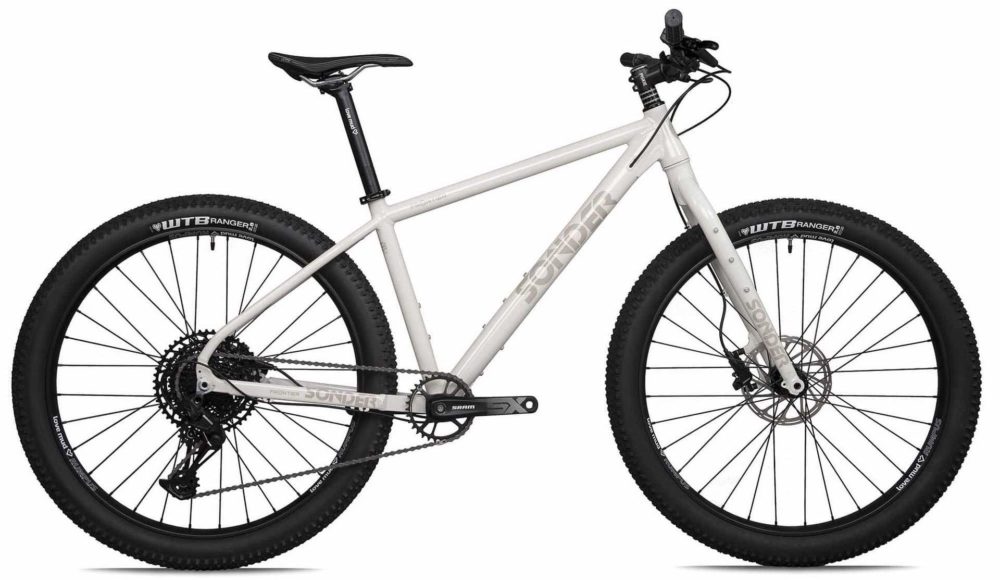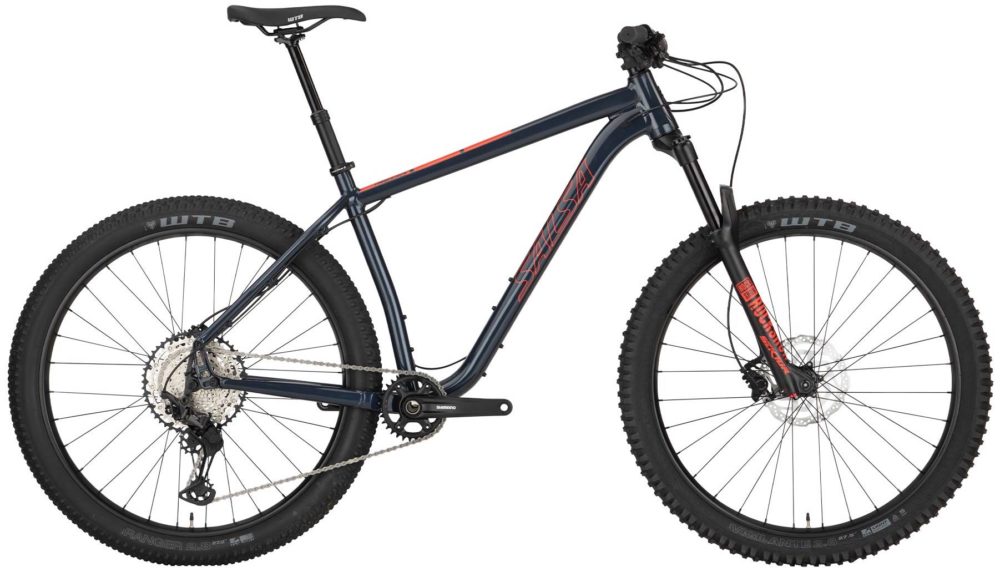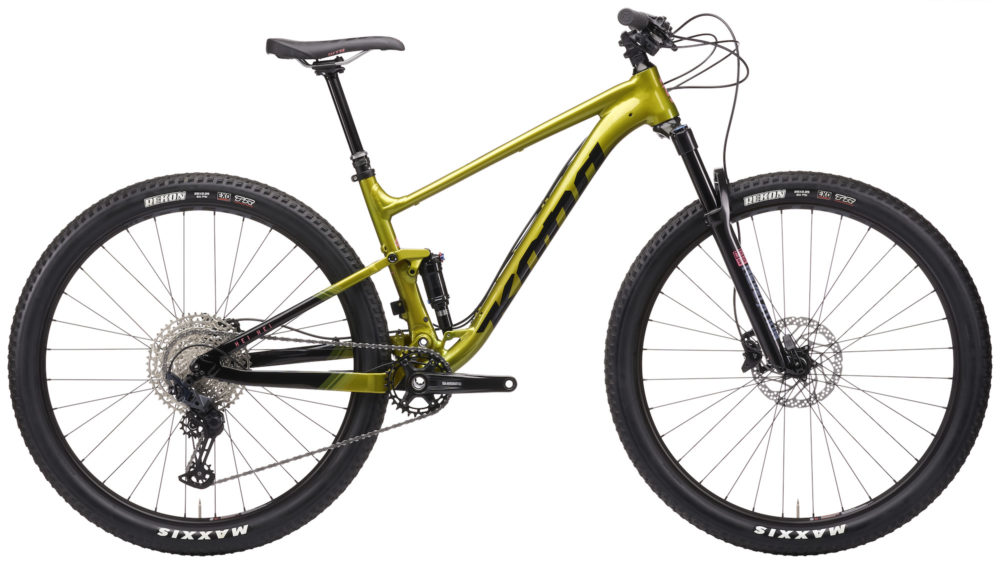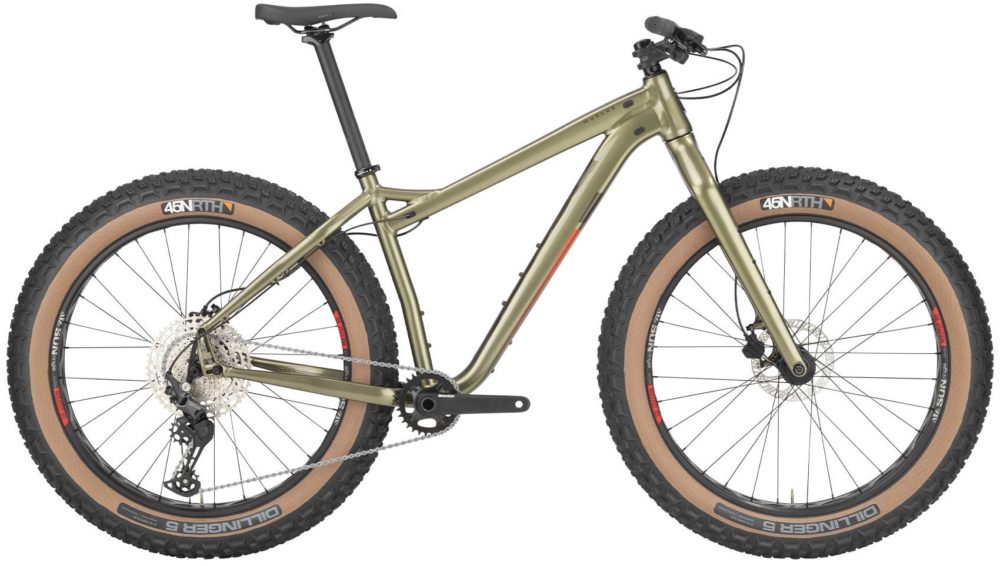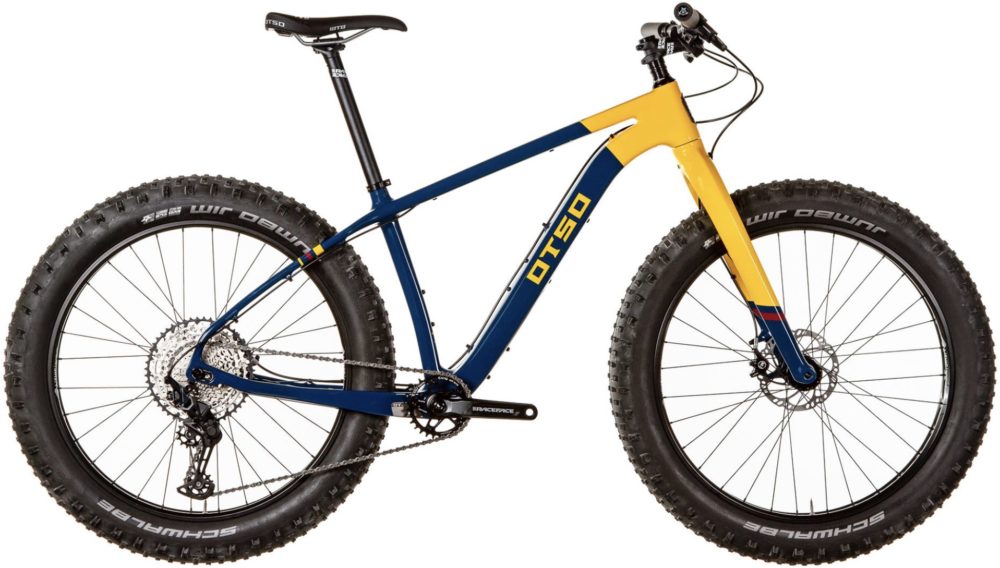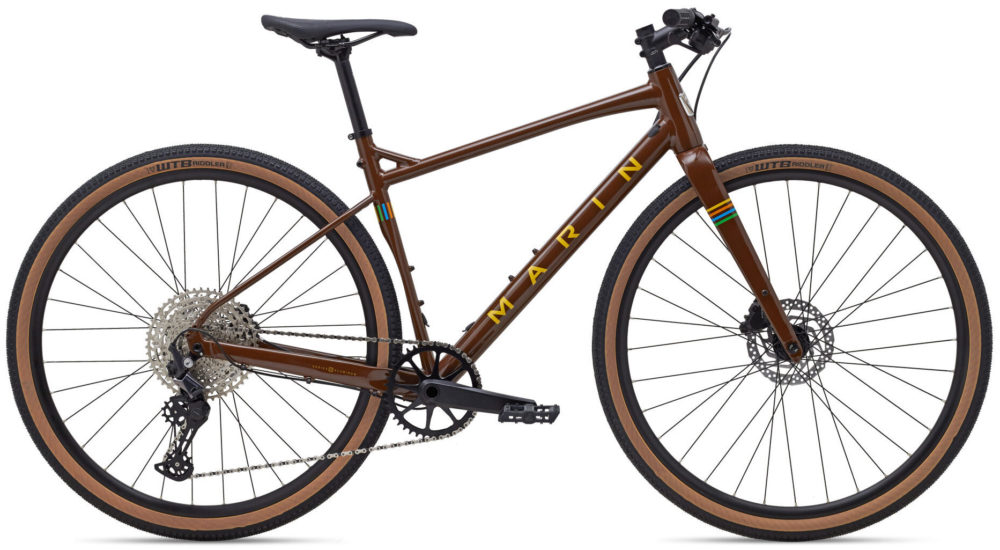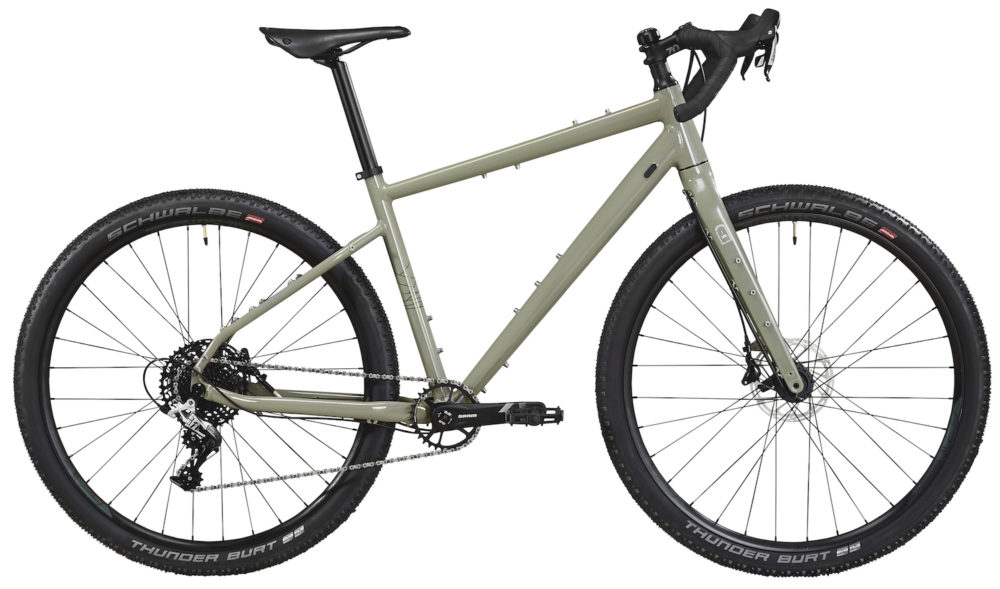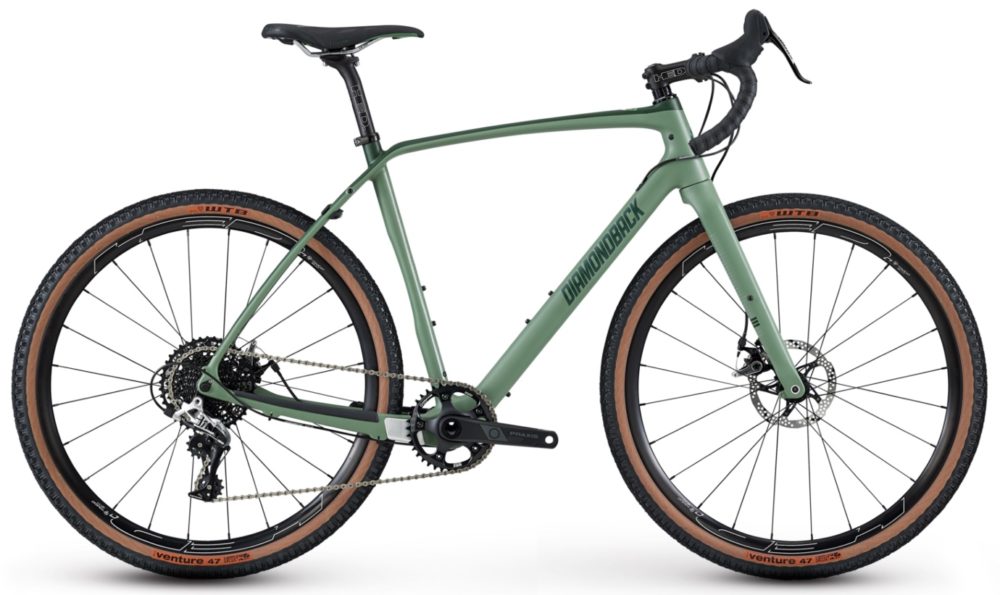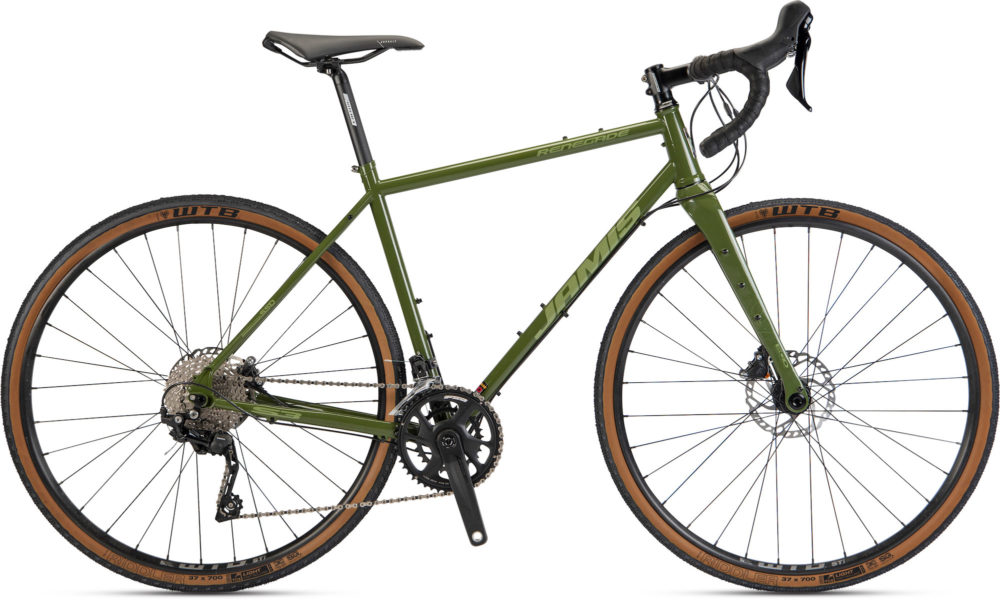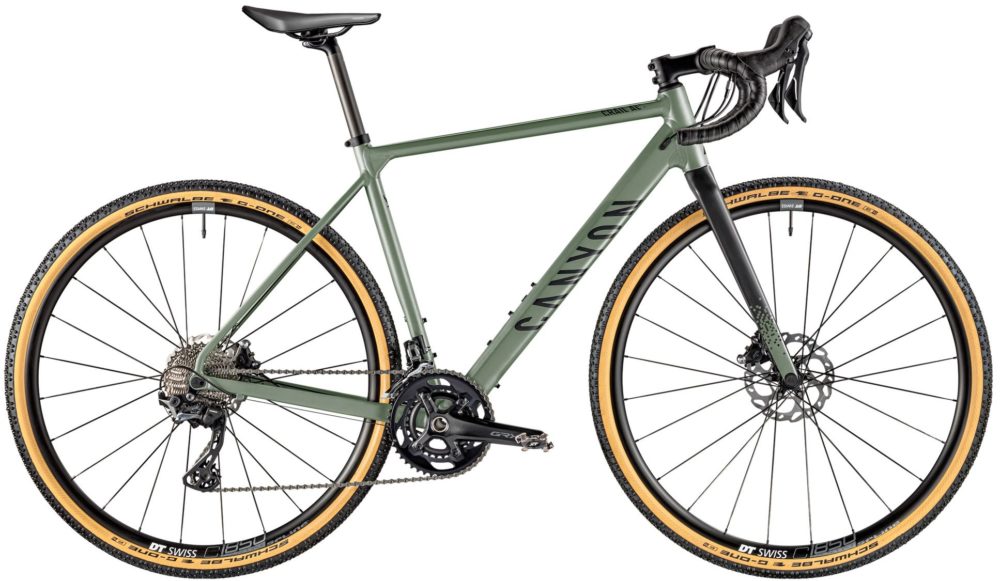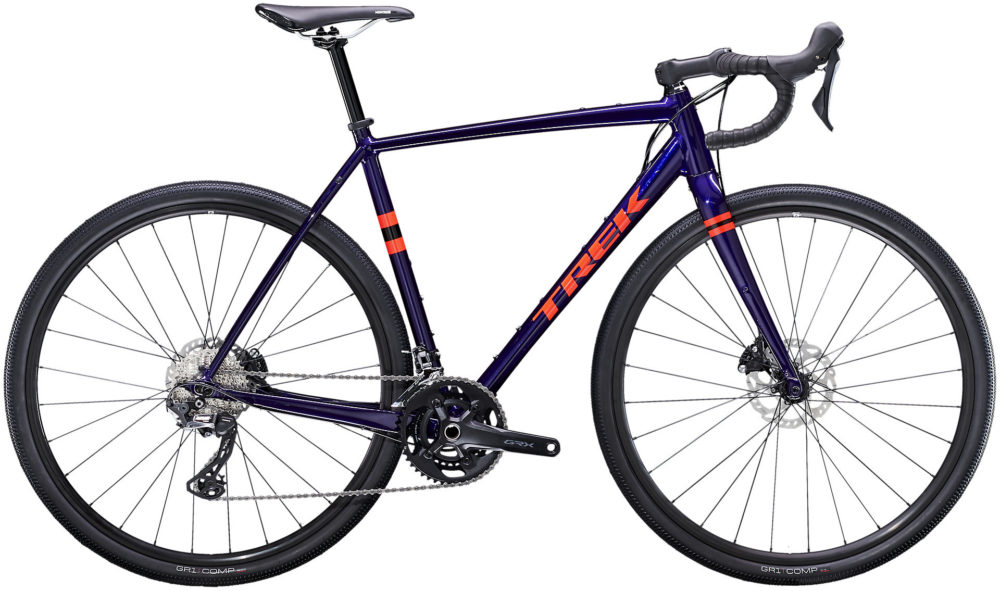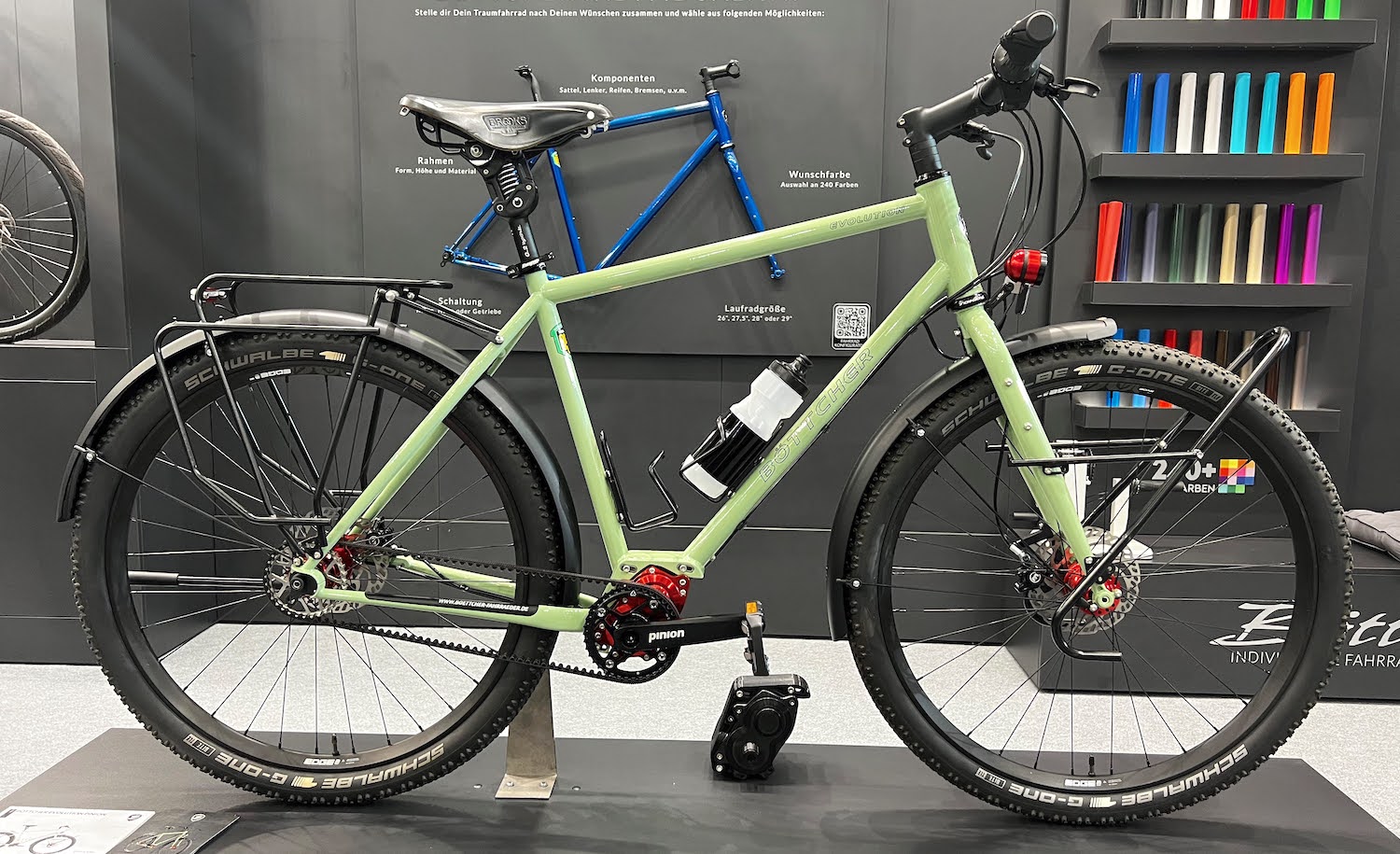Table of Contents
- How Did I Select The Best Bikepacking Bikes?
- Bikepacking Bike Categories
- Coronavirus Supply Chain Issues
- The Best Bikepacking Bikes For 2021
- 29 Plus – Jones Plus LWB ($2099)
- 27 Plus – Sonder Frontier SX (£799)
- Plus Hardtail – Salsa Timberjack XT ($1999)
- Full Suspension – Kona Hei Hei ($2599)
- Fat Bike – Salsa Mukluk ($1699)
- Mid Fat – Otso Voytek ($3400)
- 29″ Flat Bar – Marin DSX2 ($1149)
- 29″ Drop Bar – Riverside RT 920 (€1499)
- 27.5″ Gravel – Poseidon Redwood ($899)
- 27.5″ Gravel Ultralight – Diamondback Haanjo 6C ($2500)
- 700C Gravel – Jamis Renegade S3 ($1349)
- 700C Gravel Ultralight – Canyon Grail 7 ($1999)
- 700C Gravel Allround – Trek Checkpoint ALR5 ($2099)
It’s time for my take on the best bikepacking bikes for 2021.
In this super in-depth article, I’ll first explain how I went about selecting these bikes. I’ll then discuss the different bike categories, and finally, we will look at all of the bikes that stand out to me.
I have made this resource particularly informative so that you can learn some cool stuff, and apply my knowledge to any bike – new or second hand, expensive or cheap.
I’m using my Bikepacking Bike Buyer’s Guide to compare and select all of these bikes. The book goes into every detail about bikepacking bikes, before allowing you to compare over 220 current models at the back of the book. Don’t worry about it going out-of-date, it’s updated yearly for free.
How Did I Select The Best Bikepacking Bikes?
Frame Geometry
I first assessed the frame geometries for each of these bikes to see whether they are suitable for the bike’s intended use. I was looking for bikes that are stable to ride, more upright than typical and with the appropriate steering characteristics for the expected terrain.
Low Climbing Gears
I next looked at the lowest climbing gear on each of the bikes. If you don’t have a low enough climbing gear, you simply struggle more than necessary.
We will use gear inches to compare the climbing gears on different bikes. This is the diameter of the wheel, times the size of the front chainring and divided by the size of the rear cog. With this information, we can compare bikes with different wheel sizes and drivetrain setups.
Don’t worry about the fact that we’re talking in inches – I just prefer the double or triple-digit numbers that it spits out. All you really need to know is that lower is always better, and the benchmark for off-road is less than 20 gear inches, and for gravel, it’s less than 24 gear inches.
Gear inches are also relative: a bike with a 10% smaller number will climb 10% slower using the same RPM.
Maximum Tyre Widths
There are very few downsides to having a bike that can clear wide tyres, so I have prioritised any models with more generous clearances within their bike category.
Price/Value
And lastly, I have narrowed the options down to the point where you get the most performance for your money. If these prices are too high for your budget, you should look for an older version of these bikes second-hand.
Bikepacking Bike Categories
Each of my bike picks represents a different bike category.
29″ Plus bikes use the largest diameter rim and wide 3.0″ tyres.
27″ Plus bikes have the same tyre footprint but the wheel diameter is smaller.
Plus Hardtail bikes are designed to be more fun on trails, using suspension forks and dropper posts.
Full Suspension bikes employ front and rear suspension to maintain excellent traction and make rough trails a breeze.
Fat bikes are snow and sand specialists, with the ability to fit 5” wide tyres.
Mid-Fat bikes are the middle ground between a plus and fat bike.
29″ Flat Bar bikes employ a more agile mountain bike frame geometry and mountain bike tyres wider than 2.1″.
29″ Drop Bar bikes are the curly bar version.
27.5″ Gravel bikes use smaller mountain bike wheels but with 50mm or wider tyres.
27.5″ Gravel (Ultralight) is the weight-optimised version.
700C Gravel bikes are the fastest on smoother surfaces, using 40-50mm wide tyres.
700C Gravel (Ultralight) is the weight-optimised version.
700C Gravel (All-Round) is both weight and tyre clearance optimised.
Coronavirus Supply Chain Issues
One last note, there is some unfortunate news about buying bikes this year – COVID has wreaked havoc on the bike supply chain, and there is also unprecedented demand for bikes. This means that you might not actually get your hands on some of these bikes immediately, and will likely have to wait.
The Best Bikepacking Bikes For 2021
29 Plus – Jones Plus LWB ($2099)
Let’s start with the Jones Plus LWB (long wheelbase), which is a unique bike even within the 29+ category.
Jones take a regular plus bike but stretch out both the front and rear centres. As both ends of the bike are longer, you end up with similar weight distribution on the tyres.
There are two big advantages to this design:
(1) The longer wheelbase provides more stability at speed, which will keep your bike more composed on rougher terrain.
(2) You can more comfortably climb steeper gradients with the longer chainstays. This is because the looping angle at the back of the bike increases, meaning your front wheel will stay planted even on the steepest ascents.
The disadvantages to long chainstay bikes are that it’s harder to lift the front wheel over obstacles, and the bike is a bit less agile on tight, twisty trails. The way I see it, tight trails usually make up a very small percentage of any bikepacking route – so optimising around stability is probably the way to go.
The Jones is my 29+ pick because it’s priced well, it has low gear ratios for climbing and it’s running appropriately wide rims for its 3-inch tyres. The steering is quicker than most plus bikes, which will help change direction with a moderate front load. It also has more than enough mounts for cargo cages and even racks and fenders.
The only change I’d recommend is an upgrade to some hydraulic brakes.
Jones Plus LWB vs. Plus Category Average
Weight: ~15.3kg – Category 14.1kg (9% more than average)
Steering Speed: 83mm – Category 93mm (11% faster than average)
Low Climbing Gear: 18 gear inches – Category 19 gear inches (5% lower than average)
27 Plus – Sonder Frontier SX (£799)
The Sonder Frontier is an excellent value plus bike. According to Sonder, this bike tips the scales at 12.2kg/26.9lb which is substantially lighter than almost all other plus bike offerings. This low weight and great value are thanks to the unrivalled price-to-weight ratio of an aluminium frame and fork, which usually saves 1.0-1.5kg over the equivalent steel offering.
The Frontier is using a SRAM 1X drivetrain with the same 18-inch climbing gear as the Jones. Unlike the Jones, the frame geometry is more on the playful end of things, so you can expect it to ride with more agility.
It’s worth noting that you can get the frameset for £299, and the wheels for £179, which would be a great place to start on a custom build. You can also get the complete bike with 29″ wheels and a suspension fork if you’re after something that is more optimised around recreational mountain biking.
Sonder Frontier vs. Plus Category Average
Weight: 12.2kg – Category 14.1kg (13% less than average)
Steering Speed: 93mm – Category 93mm (same as average)
Low Climbing Gear: 18 gear inches – Category 19 gear inches (5% lower than average)
Plus Hardtail – Salsa Timberjack XT ($1999)
If you’d prefer to have a more multipurpose mountain bike – for the money, I don’t know if you can do better than the Salsa Timberjack XT.
This bike offers a suspension fork with 130mm of travel (which you can lock out) along with a dropper seatpost. These two components alone will transform any plus bike into a trail-shredding machine, allowing you to take on much rougher, steeper and more technical terrain than usual.
The downside to these components is the need to service them – RockShox forks call for a 50-hour service interval for the lower legs and 200 hours for a full strip and rebuild.
The climbing gear is 18 gear inches which is great for bikepacking, and shifting will be sublime given the bike has been specced with a Shimano XT shifter and derailleur.
One of the nicest things about Salsa bikes is that many models have perfectly fitting frame packs available, and the Timberjack is no exception.
Salsa Timberjack vs. Plus Category Average
Weight: 13.9kg – Category 14.1kg (1% less than average)
Steering Speed (Trail): 106mm – Category 93mm (14% slower than average)
Low Climbing Gear: 18 gear inches – Category 19 gear inches (5% lower than average)
Full Suspension – Kona Hei Hei ($2599)
For rough terrain and all-around mountain bike fun, it’s hard to beat a full suspension bike. The suspension allows you to tackle the same technical terrain as a plus bike, but with lighter, narrower and faster rolling tyres – it’s also the fun-est to ride on singletrack, in my opinion.
The model that stands out most to me this year is the Kona Hei Hei. It has a decent space for a custom frame pack, along with the new Shimano Deore 12 speed drivetrain (with an 18″ climbing gear), a long dropper seatpost and 29 x 2.5″ tyre clearance.
Kona Hei Hei vs. Full Suspension Category Average
Weight: ~14.2kg – Category 13.6kg (4% more than average)
Steering Speed: 97mm – Category 103mm (6% faster than average)
Low Climbing Gear: 18 gear inches – Category 18 gear inches (same as average)
Fat Bike – Salsa Mukluk ($1699)
For loose surfaces like sand or snow, you need maximum tyre floatation – and that’s where the wider 26″ fat bike tyres still hold the advantage when compared to narrower 27.5″ fat bikes.
The best value 26″ fat bike this year is the aluminium Salsa Mukluk. It comes stock with 4.6″ tyres but will squeeze in a 4.8″ if you need. The drivetrain is the new Shimano Deore 11-speed with an 18″ climbing gear.
As usual, you can order your bike with a perfectly fitting frame pack, and the Mukluk has all the provisions to carry a bikepacking bag ensemble or rear panniers if you need the volume.
Salsa Mukluk vs. Fat Bike Category Average
Weight: 15.0kg – Category 13.9kg (8% more than average)
Steering Speed – 97mm – Category 94mm (3% slower than average)
Low Climbing Gear – 18 gear inches – Category 18 gear inches (same as average)
Mid Fat – Otso Voytek ($3400)
If you do not need the massive tyre float of the Mukluk, you can use a mid-fat bike that’s a bit more well-rounded on different surfaces. The full-carbon Otso Voytek may be the most expensive in this list, but at 11.5kg/24.5lb, it’s light, and it comes with some unique features.
While most fat bikes have a very wide crank distance between the pedals, the Otso is a just 10mm wider than normal. This reduces knee strain by bringing the pedals closer together, and it provides extra cornering clearance too.
The Voytek is able to adapt to different wheel sizes using special sliding dropouts which change both the chainstay length and the bottom bracket height. This means you compromise much less than normal when choosing between regular mountain bike tyres, 3.0” plus tyres, 4” mid-fat tyres or a full-fat set up like you see pictured.
The entry-level Voytek comes with Shimano SLX gearing, but you can configure the bike from the ground up in the Otso configurator.
Bike Snapshot vs. Fat Bike Category Average
Weight: 11.5kg – Category 13.9kg (17% less than average)
Steering Speed: 92mm – Category 94mm (2% faster than average)
Low Climbing Gear: 19 gear inches – Category 18 gear inches (5% higher than average)
29″ Flat Bar – Marin DSX2 ($1149)
Let’s move onto something a little bit quicker on smoother surfaces.
I’m all about the new Marin DSX2. It’s insane-value at $1149, with the latest 12-speed Shimano Deore drivetrain, a full carbon fork, hydraulic brakes, and a lightweight aluminium frame.
There is clearance for a 2.1″ tyre, so this is not quite as versatile as other bikes in this category (which will fit up to 2.5″). But you’ll find that 2.1″ is ample width for most gravel surfaces.
You can expect the DSX2 to tip the scales at around 11kg/24lb, making it especially light for its price.
Bike Snapshot vs. 29″ Category Average
Weight: ~10.9kg – Category 11.9kg (8% less than average)
Steering Speed: 80mm – Category 79mm (1% slower than average)
Low Climbing Gear: 24 gear inches – Category 24 gear inches (same as average)
29″ Drop Bar – Riverside RT 920 (€1499)
If you’ve decided that drop bars are what your 29er requires, the new Riverside RT 920 is where the value is at.
This aluminium bike is 12.7kg and has been designed for moderate off-road terrain. It has a lower climbing gear than the average bike in this category, it will squeeze in wide 2.4″ tubeless tyres, and it’s running a SRAM 1×11 drivetrain and hydraulic disc brakes.
This is also the only bike on this list that comes with a dynamo hub and USB charger, which I’m pretty stoked on.
You will find the Cycle2Charge USB plug integrated neatly into the steerer tube. This unit is actually a pretty effective charger after 16KPH and it makes excellent power after 20KPH. I definitely recommend a pass-through battery for bikepacking as you will end up losing charge regularly otherwise and your device won’t like that. Please check out my in-depth battery article linked in the description.
The only downside to the RT 920 is that the geometry is a bit quirky – the bike would benefit from a slacker head tube angle, longer fork offset and lower bottom bracket, in particular. But they’re also not a deal-breaker.
Riverside RT 920 vs. 29″ Category Average
Weight: 12.7kg – Category 11.9kg (7% more than average)
Steering Speed: 76mm – Category 79mm (4% faster than average)
Low Climbing Gear: 22 gear inches – Category 24 gear inches (8% lower than average)
27.5″ Gravel – Poseidon Redwood ($899)
Amongst 27.5″ gravel bikes, the Poseidon Redwood honestly seems too good to be true.
This is a ridiculously good value bike at just $899, and it has a more generous 2.5″ tyre clearance than any bike in this category. It’s running a 1X10 Microshift groupset which is generally well-received, it has modern frame features and lots of bikepacking mounts. The 22″ climbing gear is perfect and it’s tubeless-ready too.
My only criticism is that the handlebar will be very low for riders above 180cm/5ft11 – especially if you have long legs for your height.
Poseidon Redwood vs. 27.5″ Category Average
Weight: ~12.5kg – Category 10.8kg (16% more than average)
Steering Speed: 74mm – Category 65mm (14% slower than average)
Low Climbing Gear: 22 gear inches – Category 25 gear inches (12% lower than average)
27.5″ Gravel Ultralight – Diamondback Haanjo 6C ($2500)
I’ve recommended the Diamondback Haanjo ever since it came out, and the 2021 version is no exception.
This full-carbon 27.5″ gravel bike tips the scales at 9.7kg. It has a mid-range SRAM Rival 1X groupset paired with some rather nice Praxis cranks. The wheels are relatively lightweight and the bike is set up tubeless from the factory.
While the tyre clearance is not on the same level as the Redwood, the 50mm wide rubber will be great for the majority of gravel rides.
Diamondback Haanjo vs. 27.5″ Category Average
Weight: 9.7kg – Category 10.8kg (10% less than average)
Steering Speed: 69mm – Category 65mm (6% slower than average)
Low Climbing Gear: 24 gear inches – Category 25 gear inches (4% lower than average)
700C Gravel – Jamis Renegade S3 ($1349)
In the gravel 700C gravel category, I really like the Jamis Renegade steel.
For starters, it has one of the most thought-out frame geometries. The two smallest sizes come with 650B wheels which are a better fit for a smaller rider. They help reduce the frame standover and decreases the toe overlap. The fork offset is longer in the middle frame sizes, which aids in reducing toe overlap for average riders. You’ll notice the chainstays get longer as the bikes get bigger. This is how all gravel bikes should be sized as the long chainstays help to correct the front and rear weight distribution of a tall cyclist.
The Renegade is using a Shimano GRX 2X drivetrain to give it the holy trinity – a wide gear range, small gear jumps when you change gears and a lower climbing gear than almost all gravel bikes. This will make the drivetrain equally as nice to use on-road and off-road.
The frame uses smaller diameter steel tubing to increase the side-to-side flex of the bike when compared to other gravel bikes, which gives it a lively ride underneath you. Even though the frame is made from steel, the full-carbon fork helps to save lots of weight – resulting in an 11kg bike.
Bike Snapshot vs. 700C Category Average
Weight: 11.0kg – Category 10.2kg (8% more than average)
Steering Speed: 61mm – Category 68mm (10% faster than average)
Low Climbing Gear: 23 gear inches – Category 26 gear inches (9% lower than average)
700C Gravel Ultralight – Canyon Grail 7 ($1999)
Have you noticed that this is the fifth green bike in a row? This colour is clearly on trend!
If you’re after something ultralight and good value, it’s hard to go past the Canyon Grail 7. This aluminium bike with a carbon fork tips the scales at just 9.4kg.
It has been specced with a 2X11 Shimano GRX groupset which offers a better than usual 24″ climbing gear and hydraulic brakes. Other notable components on the Canyon include some nice DT Swiss wheels and a carbon seatpost which has been tuned to flex 5-10mm up and down, providing a silky-smooth ride on bumpy roads.
Canyon Grail 7 vs. 700C Category Average
Weight: 9.4kg – Category 10.2kg (8% less than average)
Steering Speed: 67mm – Category 68mm (same as average)
Low Climbing Gear: 24 gear inches – Category 26 gear inches (8% lower than average)
700C Gravel Allround – Trek Checkpoint ALR5 ($2099)
My all-round gravel category favours bikes that can squeeze in a bit more rubber than typical, in the case of the Checkpoint, you can sometimes fit 50mm or 2.0″ wide tyres.
The Checkpoint uses the highest tier of aluminium tubing to create a frame that’s only 1.5kg. It’s using the same Shimano GRX groupset as the Canyon so the climbing gear is also appropriately low and the hydro brakes nice and powerful.
This bike has an adjustable chainstay, which means that taller riders can select the longer length while shorter riders. It’s also available in three different colours, which is unusual on higher-end bikes.
Bike Snapshot vs. 700C Category Average
Weight: 10.2kg – Category 10.2kg (same as average)
Steering Speed: 61mm – Category 68mm (10% faster than average)
Low Climbing Gear: 24 gear inches – Category 26 gear inches (8% lower than average)


